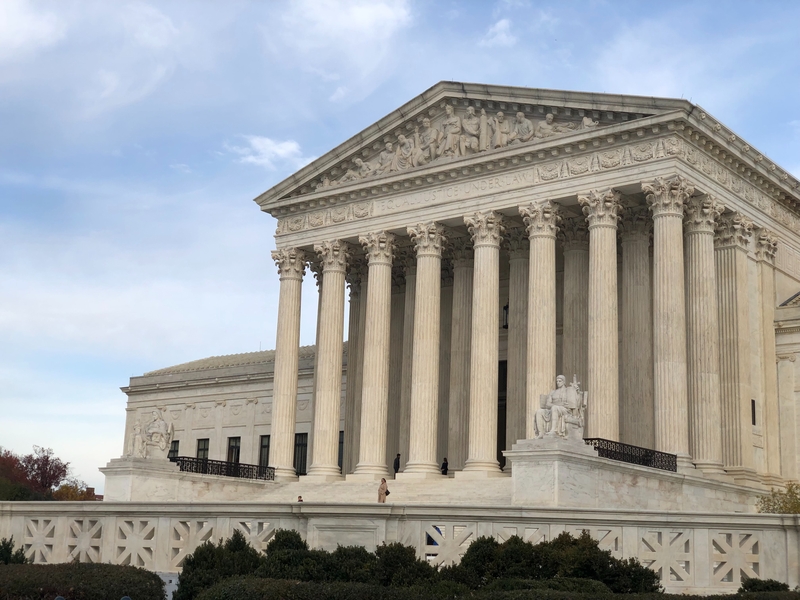Understanding the Federal Employees Retirement System: A Comprehensive Guide to Retirement Benefits for Federal Employees
"The Federal Employees Retirement System is a key part of our nation's commitment to honor the service and sacrifice of our federal employees." - Jim Moran
Brief Insight
The Federal Employees Retirement System (FERS) is a retirement plan for federal employees in the United States. It provides benefits such as a pension, Social Security, and a Thrift Savings Plan (TSP) to help federal employees save for retirement. FERS was created to replace the Civil Service Retirement System (CSRS) in 1987.

PHOTO: https://unsplash.com/@soldtunic4
Understanding the Federal Employees Retirement System
The Federal Employees Retirement System (FERS) is a retirement plan for federal employees in the United States. It provides retirement benefits to eligible employees, including a pension, Social Security, and a Thrift Savings Plan (TSP).
The FERS was created in 1987 to replace the Civil Service Retirement System (CSRS) as the primary retirement plan for federal employees. Unlike the CSRS, which only provided a pension benefit, FERS is a three-tiered retirement plan that includes Social Security, a basic annuity, and a Thrift Savings Plan.
The basic annuity is a defined benefit pension plan that provides a monthly retirement income based on the employee's length of service and highest average pay. The Social Security component is similar to what private sector employees receive and provides additional retirement income. The Thrift Savings Plan is a defined contribution plan that allows employees to save for retirement through tax-deferred contributions and employer-matching contributions.
Federal employees are eligible for retirement benefits under FERS if they have completed at least five years of creditable civilian service. The retirement benefits vary based on the length of service and the employee's age at retirement.
In addition to retirement benefits, FERS also provides disability and survivor benefits for eligible employees and their families. Disability benefits provide a portion of the employee's retirement income if they become disabled before retirement. Survivor benefits provide a monthly annuity to the employee's spouse or other eligible survivors in the event of the employee's death.
The Federal Employees Retirement System is a comprehensive retirement plan for federal employees that provides retirement, disability, and survivor benefits. Eligible employees are provided with a basic annuity, Social Security, and a Thrift Savings Plan to help them save for retirement. The FERS plan is a valuable benefit that attracts and retains talented employees who serve our country.
Interesting Facts
FERS was created in 1986 as a replacement for the Civil Service Retirement System (CSRS), which had been in place since 1920.
FERS is a three-tiered retirement system that includes a basic benefit plan, a Social Security benefit, and the Thrift Savings Plan (TSP).
FERS covers over 4 million federal employees, including civilian employees of the executive branch, members of Congress, and federal judges.
A Brief History of the Creation of the Federal Employees Retirement System
The Federal Employees Retirement System (FERS) was created in 1987 as a replacement for the Civil Service Retirement System (CSRS), which had been the primary retirement plan for federal employees for decades. The creation of FERS was a result of several factors, including changing workforce demographics, economic conditions, and government budget concerns.
The CSRS was established in 1920 and provided a defined benefit pension plan to federal employees. The pension benefit was based on the employee's length of service and highest average pay. While the CSRS provided a secure retirement income for federal employees, it was becoming increasingly costly for the government to maintain.
In the 1970s and 1980s, the federal workforce was changing, and the government was seeking to modernize its personnel policies. The Baby Boomer generation was entering the workforce, and younger employees were seeking more flexible retirement options. The government was also facing budget constraints and needed to find ways to reduce the cost of retirement benefits.
In response to these challenges, Congress passed the Federal Employees Retirement System Act in 1986, which created the FERS retirement plan. FERS was designed to be a three-tiered retirement plan that included Social Security, a basic annuity, and a Thrift Savings Plan (TSP).
The basic annuity provided a monthly retirement income based on the employee's length of service and highest average pay, similar to the CSRS. The Social Security component provided an additional retirement income, and the TSP allowed employees to save for retirement through tax-deferred contributions and employer-matching contributions.
FERS was implemented in 1987 and became the primary retirement plan for federal employees hired after January 1, 1984. CSRS employees had the option to switch to FERS or remain in the CSRS plan.
The creation of the Federal Employees Retirement System was a result of changing workforce demographics, economic conditions, and government budget concerns. FERS was designed to be a modern and flexible retirement plan that provided retirement, disability, and survivor benefits to eligible federal employees. Today, FERS remains a valuable benefit that attracts and retains talented individuals to serve the public.

PHOTO: https://unsplash.com/@bermixstudio
The Funding Mechanism of the Federal Employees Retirement System: A Comprehensive Overview
The Federal Employees Retirement System is funded through a combination of employee contributions, employer contributions, and investment earnings.
Employee Contributions:
Under FERS, federal employees are required to contribute a portion of their salary to their retirement plan. The contribution rate for most employees is 0.8% of their salary for the basic annuity, and an additional 4.4% for Social Security. Employees can also make voluntary contributions to the Thrift Savings Plan (TSP), which is a defined contribution plan that allows employees to save for retirement through tax-deferred contributions.
Employer Contributions:
The federal government also makes contributions to FERS on behalf of its employees. The government's contribution rate varies based on the employee's retirement coverage, with rates ranging from 6.2% to 12.7% of the employee's salary. The government's contributions are used to fund the basic annuity and Social Security components of the FERS plan.
Investment Earnings:
The Thrift Savings Plan is invested in a variety of funds, including stock, bond, and government securities funds. The investment earnings from these funds are used to help fund the TSP and provide retirement income to participating employees.
In addition to these funding sources, the federal government also makes contributions to the FERS Trust Fund to ensure that there are sufficient funds to pay retirement benefits to eligible employees. The FERS Trust Fund is a separate account within the U.S. Treasury that is used to hold and invest the contributions made to the FERS plan.
The Federal Employees Retirement System is funded through a combination of employee contributions, employer contributions, and investment earnings. Federal employees are required to contribute a portion of their salary to their retirement plan, while the government also makes contributions on their behalf. The Thrift Savings Plan is invested in a variety of funds, with the investment earnings used to fund the TSP and provide retirement income to participating employees. The FERS Trust Fund is used to hold and invest the contributions made to the FERS plan to ensure that there are sufficient funds to pay retirement benefits to eligible employees.
Last Trends
Potential changes to retirement benefits: There have been proposals to change the retirement benefits for federal employees, including potential changes to the FERS pension and Social Security benefits. It is important for federal employees to stay informed about these proposals and any potential changes that may impact their retirement benefits.
The growing interest in phased retirement: Phased retirement allows federal employees to gradually transition into retirement by working part-time while receiving partial retirement benefits. This option has gained popularity in recent years as a way for federal employees to ease into retirement and maintain their financial security.
The Administration of the FERS: Roles, Responsibilities, and Processes
The Federal Employees Retirement System is administered by several federal agencies and organizations, each with specific roles and responsibilities in the administration process.
The Office of Personnel Management (OPM) is responsible for the overall management of the FERS program. This includes establishing policies and regulations for the program, processing retirement applications, and managing the Thrift Savings Plan (TSP). OPM also maintains records of all federal employees who are covered by the FERS plan.
The Federal Retirement Thrift Investment Board (FRTIB) is responsible for managing the Thrift Savings Plan. This includes selecting investment options, providing educational resources to plan participants, and maintaining records of plan contributions and earnings.
The employing agency of the federal employee is also involved in the administration of the FERS plan. The agency is responsible for verifying the employee's eligibility for retirement benefits, calculating the employee's length of service and highest average pay, and providing this information to OPM for use in calculating the employee's retirement annuity.
Employees who participate in the FERS plan also have responsibilities in the administration process. This includes keeping their personal information up to date with their employing agency and OPM, ensuring that their contributions to the TSP are accurate, and keeping track of their retirement benefits and eligibility for retirement.
The administration of the FERS plan involves several processes, including retirement application processing, survivor benefits, disability benefits, and death benefits. Each of these processes has specific requirements and timelines that must be met to ensure that eligible employees receive their retirement benefits in a timely and accurate manner.
The Federal Employees Retirement System is administered by several federal agencies and organizations, each with specific roles and responsibilities in the administration process. The OPM is responsible for the overall management of the FERS program, while the FRTIB is responsible for managing the Thrift Savings Plan. The employing agency of the federal employee is also involved in the administration of the FERS plan, and employees themselves have responsibilities in the administration process. The administration of the FERS plan involves several processes, each with specific requirements and timelines that must be met to ensure that eligible employees receive their retirement benefits in a timely and accurate manner.

PHOTO: https://unsplash.com/@obionyeador
Eligibility for the Federal Employees Retirement System: Who Can Participate?
The Federal Employees Retirement System is a retirement plan for federal employees in the United States. Not all federal employees are eligible to participate in the FERS plan. Eligibility is determined by several factors, including the type of federal employment, length of service, and other criteria.
Most federal employees are eligible to participate in the FERS plan. This includes employees of executive branch agencies, members of Congress, and certain employees of the judicial and legislative branches of government. However, some employees are not eligible to participate in the FERS plan, including employees of non-appropriated fund instrumentalities and employees of the Central Intelligence Agency (CIA) and the Federal Bureau of Investigation (FBI).
To be eligible for retirement benefits under the FERS plan, employees must meet the certain length of service requirements. For most employees, this means completing at least five years of creditable service. However, certain employees may be eligible for immediate retirement with less than five years of service, such as law enforcement officers, firefighters, and air traffic controllers.
Employees must also meet certain age and service requirements to be eligible for full retirement benefits. For most employees, this means reaching age 62 with at least five years of creditable service or reaching their minimum retirement age (MRA) with at least 30 years of creditable service. The MRA varies depending on an employee's year of birth and ranges from age 55 to 57.
In addition to retirement benefits, FERS also provides benefits for employees who are unable to work due to disability. To be eligible for disability retirement benefits, employees must have completed at least 18 months of creditable civilian service, be unable to perform their job duties due to a medical condition, and be expected to be unable to perform their job duties for at least one year.
Eligibility for the Federal Employees Retirement System is determined by several factors, including the type of federal employment, length of service, and other criteria. Most federal employees are eligible to participate in the FERS plan, but some are not. To be eligible for retirement benefits under the FERS plan, employees must meet a certain length of service, age, and other requirements. FERS also provides benefits for employees who are unable to work due to disability, subject to certain eligibility criteria.

PHOTO: https://unsplash.com/@kel_foto
The Advantages and Benefits of the Federal Employees Retirement System
The Federal Employees Retirement System provides a range of advantages and benefits to federal employees in the United States. These benefits are designed to help ensure that federal employees are able to retire with financial security and peace of mind and to support their overall well-being throughout their careers.
One of the main advantages of FERS is the defined benefit pension plan, which provides a guaranteed stream of income in retirement based on an employee's length of service and the highest average pay. This is an attractive benefit for federal employees because it provides a reliable source of retirement income that is not subject to the ups and downs of the stock market. The Thrift Savings Plan (TSP) is another benefit of FERS, which is a defined contribution retirement savings plan similar to a 401(k) plan. The TSP allows employees to contribute to their retirement savings on a tax-deferred basis and provides a range of investment options.
FERS also provides benefits for federal employees who are unable to work due to disability. This includes disability retirement benefits, which are available to employees who are no longer able to perform their job duties due to a medical condition. Disability benefits may also include Social Security Disability Insurance (SSDI), which provides additional income to disabled individuals who meet certain eligibility requirements.
In addition to retirement and disability benefits, FERS also provides survivor benefits. These benefits are available to spouses, children, or other eligible dependents of federal employees who die while employed or after retirement. Survivor benefits may include a survivor annuity, which provides a stream of income to the survivor, as well as other benefits such as life insurance.
FERS also provides other services and benefits, such as healthcare and long-term care insurance, dental and vision insurance, and flexible spending accounts. These benefits are designed to help federal employees and retirees manage their healthcare costs and other expenses.
The Federal Employees Retirement System provides a range of advantages and benefits to federal employees in the United States. These benefits include retirement benefits such as a defined benefit pension plan and the Thrift Savings Plan, disability benefits, survivor benefits, and other services such as healthcare and long-term care insurance. These services are designed to help ensure that federal employees are able to retire with financial security and peace of mind and to support their overall well-being throughout their careers and into retirement.
Last Trends
Increased focus on financial education: There has been a growing emphasis on providing federal employees with financial education and retirement planning resources to help them make informed decisions about their retirement benefits.
Changes to the TSP investment options: The TSP has made changes to its investment options to provide federal employees with more flexibility and options for investing their retirement savings.
Limitations and Disadvantages of the Federal Employees Retirement System
While the Federal Employees Retirement System (FERS) provides a range of benefits and advantages to federal employees in the United States, it also has some limitations and disadvantages that should be considered. These limitations can affect the retirement planning and financial security of federal employees.
One of the main limitations of FERS is the eligibility requirements. In order to be eligible for FERS benefits, an individual must have worked for the federal government for at least five years. This can be a disadvantage for employees who do not plan to work for the government for a long period of time, as they may not be able to fully vest in the retirement benefits. Additionally, the pension benefit calculation is based on the highest three years of salary, which may not reflect an employee's full career earnings.
Another limitation of FERS is the level of retirement benefits provided. The defined benefit pension plan provides a fixed amount of retirement income based on an employee's length of service and highest average pay. However, this amount may not be sufficient for some employees to meet their retirement income needs. The Thrift Savings Plan (TSP) provides an additional source of retirement income, but the amount of retirement savings accumulated in the TSP is dependent on employee contributions and investment returns, which may be uncertain.
Another disadvantage of FERS is the cost of retirement benefits. Federal employees are required to contribute to the FERS retirement system through payroll deductions, which can reduce take-home pay. Additionally, the cost of healthcare and long-term care insurance, which are available through FERS, can be high and may increase over time.
Finally, the FERS retirement system may be subject to changes in government policy and funding. This can affect the availability and level of retirement benefits provided, which may be a disadvantage for employees who are relying on these benefits for their retirement income.
The Federal Employees Retirement System provides a range of benefits and advantages to federal employees in the United States, but it also has some limitations and disadvantages that should be considered. These limitations include eligibility requirements, level of retirement benefits provided, cost of retirement benefits, and potential changes in government policy and funding. Federal employees should carefully consider these factors when planning for their retirement and financial security.

PHOTO: https://unsplash.com/@yohanmarion
How to Apply for Federal Employees Retirement System: A Step-by-Step Guide
Applying for the Federal Employees Retirement System (FERS) can be a complex process, but it is an important step for federal employees who are planning for their retirement. This guide provides a step-by-step overview of how to apply for FERS retirement benefits.
Step 1: Determine your eligibility
Before applying for FERS retirement benefits, it is important to determine your eligibility. To be eligible for FERS benefits, you must have worked for the federal government for at least five years. You must also meet certain age and service requirements to receive full retirement benefits
Step 2: Review your retirement benefits
Before applying for FERS retirement benefits, it is important to review your retirement benefits to understand what you are eligible to receive. You can review your retirement benefits by logging into your account on the Office of Personnel Management (OPM) website or by contacting your agency's human resources department.
Step 3: Submit your retirement application
To apply for FERS retirement benefits, you must submit an application to the OPM. You can apply online through the OPM retirement services website or by submitting a paper application. Your application must include personal and employment information, as well as any documentation required to verify your eligibility and retirement benefits.
Step 4: Complete the required forms
Along with your retirement application, you may need to complete additional forms, such as the Designation of Beneficiary form and the Federal Employees Health Benefits (FEHB) Program Election form. These forms are important for ensuring that your retirement benefits and insurance coverage are distributed according to your wishes.
Step 5: Wait for a decision
After you submit your retirement application and required forms, the OPM will review your application and make a decision on your retirement benefits. This process can take several months, so it is important to plan accordingly and be patient.
Step 6: Receive your retirement benefits
Once your retirement application is approved, you will begin receiving your retirement benefits. Your benefits will be paid out according to the payment option you selected on your retirement application.
In conclusion, applying for Federal Employees Retirement System benefits can be a complex process, but it is an important step for federal employees who are planning for their retirement. By following these steps, federal employees can ensure that they are eligible for retirement benefits and that their retirement application is complete and accurate.
Interesting Facts
In addition to retirement benefits, FERS also provides disability benefits, survivor benefits, and health insurance options for federal employees and their families.
The TSP, which is one of the key components of FERS, is one of the largest defined contribution retirement plans in the world, with over $750 billion in assets as of 2021.
FERS benefits are funded by a combination of employee contributions, employer contributions, and investment returns on the TSP.
- The Federal Employees Retirement System (FERS) is a retirement benefits program for federal employees that includes a pension, Social Security, and the Thrift Savings Plan (TSP).
- FERS is funded by employee and employer contributions, and the benefits are administered by the Office of Personnel Management (OPM).
- To be eligible for FERS retirement benefits, federal employees must have worked for the federal government for at least five years.
- The benefits of FERS include a pension, Social Security, and TSP contributions and matching.
- The disadvantages of FERS include potential changes to retirement benefits and limited flexibility in investment options.
- To apply for FERS retirement benefits, federal employees must determine their eligibility, review their retirement benefits, submit an application, complete required forms, and wait for a decision.
- Overall, FERS provides important retirement benefits and financial security for federal employees, but it is important to understand the eligibility requirements, benefits, and limitations before enrolling in the program.
FAQ
How long does it take to receive a decision on my FERS retirement benefits application?
The process for receiving a decision on your FERS retirement benefits application can take several months.
Can I change my FERS retirement benefits after I enroll?
Once you enroll in FERS, it can be difficult to make changes to your retirement benefits, so it is important to carefully review your options and benefits before enrolling.
What happens to my FERS retirement benefits if I leave federal employment before retirement?
If you leave federal employment before retirement, you may be eligible for a deferred retirement benefit, which allows you to receive your retirement benefits at a later date.
How do I contact the Office of Personnel Management (OPM) about my FERS retirement benefits?
You can contact the OPM retirement services department to ask questions or get help with your FERS retirement benefits by visiting their website or calling their toll-free number.
Can I retire early with FERS benefits?
Yes, you can retire early with FERS benefits as long as you meet the age and service requirements. However, retiring early may result in a reduction in your pension benefits.
What happens to my TSP contributions when I retire?
When you retire, you have several options for your TSP contributions, including leaving the funds in your TSP account, transferring them to an IRA, or taking a lump-sum distribution.
How does the FERS annuity calculation work?
The FERS annuity calculation is based on a formula that takes into account your length of service, high-three average salary, and a multiplier. The formula is: (Years of Service x 1%) x High-3 Average Salary = FERS Annuity.